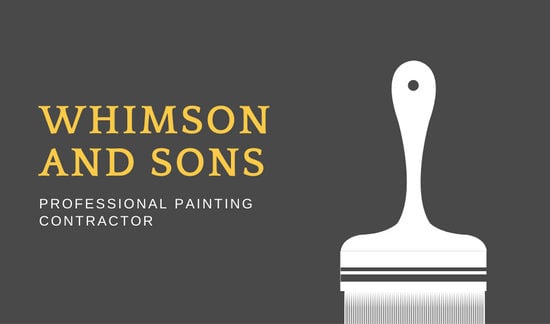Understand How Seasonal Problems Impact The Success Of Business Outside Paint And Discover The Ideal Durations To Assure Lasting Outcomes For Your Job
Understand How Seasonal Problems Impact The Success Of Business Outside Paint And Discover The Ideal Durations To Assure Lasting Outcomes For Your Job
Blog Article
click here now -Aguilar Skafte
When you're preparing a business external paint project, seasonal elements can make or damage your results. You'll wish to consider exactly how temperature level and humidity impact paint application and drying out times. Picking the right period can ensure your paint adheres properly and lasts longer. But which seasons are truly the very best for this type of work? Let's check out the crucial elements that can affect your job's success.
The Effect of Temperature Level on Paint Application
When you're intending a commercial exterior paint job, the temperature can dramatically influence exactly how well the paint sticks and dries out.
Preferably, you wish to repaint when temperatures vary between 50 ° F and 85 ° F. If it's too chilly, the paint may not cure effectively, resulting in problems like peeling or breaking.
On the flip side, if it's too hot, the paint can dry as well promptly, stopping appropriate attachment and leading to an uneven finish.
You must also think about the time of day; morning or late afternoon provides cooler temperatures, which can be a lot more beneficial.
Constantly examine the manufacturer's suggestions for the certain paint you're using, as they commonly give assistance on the optimal temperature variety for optimum results.
Humidity and Its Effect on Drying Times
Temperature level isn't the only environmental factor that affects your business external painting task; humidity plays a significant duty as well. High humidity degrees can slow down drying out times considerably, impacting the total top quality of your paint task.
When the air is saturated with moisture, the paint takes longer to cure, which can cause issues like inadequate adhesion and a greater risk of mildew growth. If you're painting on a particularly damp day, be planned for prolonged wait times between layers.
It's critical to keep track of neighborhood climate condition and strategy appropriately. Ideally, aim for humidity degrees between 40% and 70% for ideal drying out.
Maintaining these consider mind ensures your task remains on track and provides a long lasting coating.
Best Seasons for Commercial Exterior Painting Projects
What's the best season for your industrial exterior painting tasks?
Springtime and very early fall are normally your best choices. During these seasons, temperatures are moderate, and humidity degrees are frequently reduced, developing perfect conditions for paint application and drying.
Avoid summertime's intense heat, which can trigger paint to dry as well quickly, causing poor adhesion and finish. Similarly, wintertime's cold temperature levels can prevent proper drying out and treating, running the risk of the longevity of your paint job.
Aim for days with temperature levels between 50 ° F and 85 ° F for optimum results. Remember to inspect the regional weather report for rainfall, as damp conditions can spoil your job.
Planning around these variables guarantees your paint task runs smoothly and lasts longer.
Verdict
Finally, planning your industrial exterior paint jobs around seasonal factors to consider can make a substantial difference in the result. By scheduling work during the excellent temperature levels and humidity levels, you'll make certain better attachment and drying times. Remember to watch on https://www.bobvila.com/articles/best-exterior-house-color-combinations/ and pick the right time of year-- spring and very early loss are your best choices. Taking these steps will certainly aid you accomplish a resilient and expert finish that lasts.
